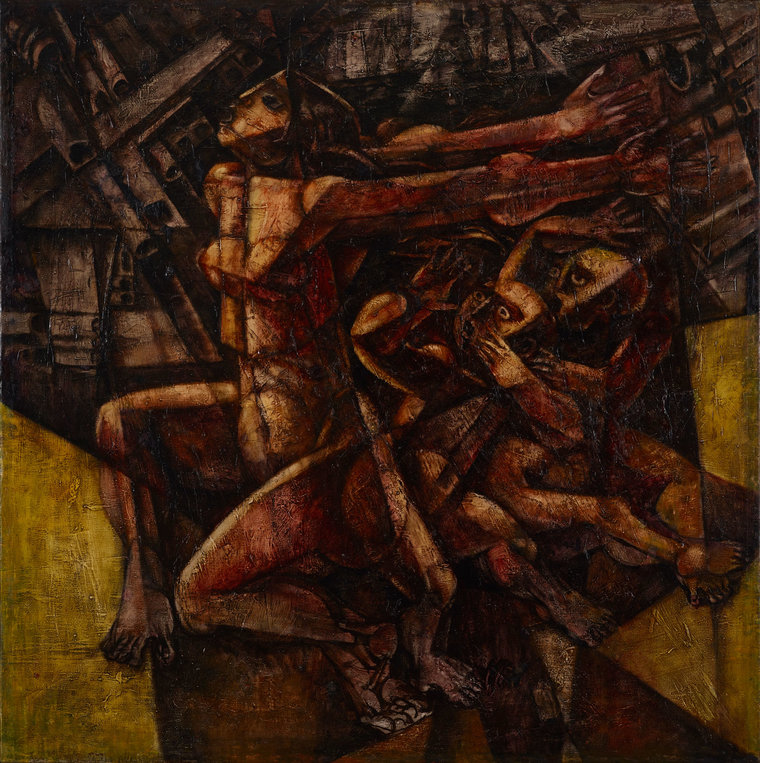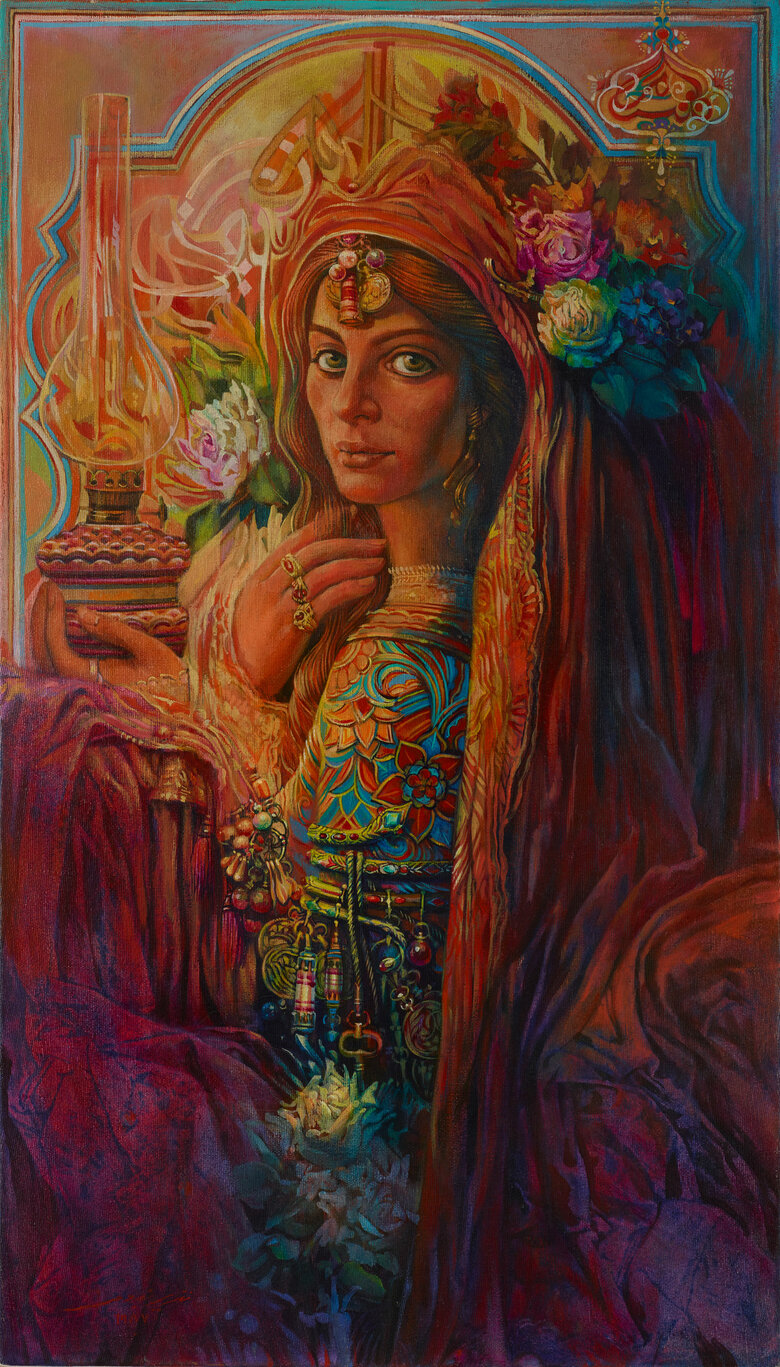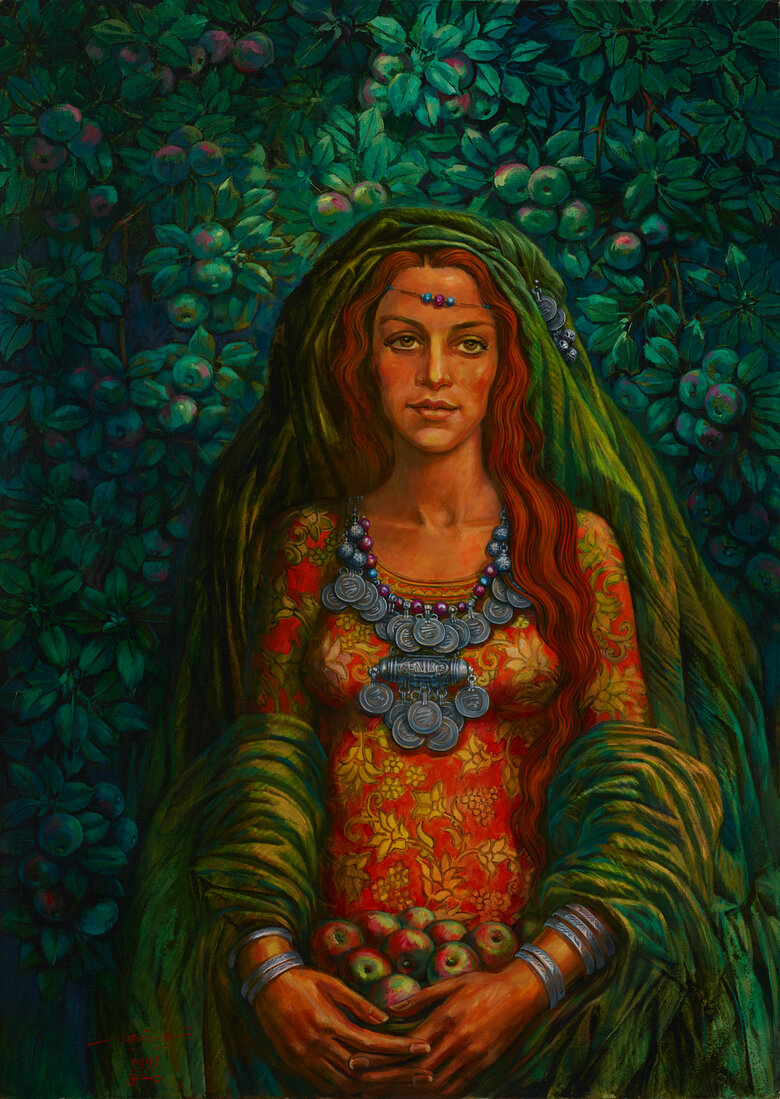On April 8, 1970, the Israeli Defense Forces (IDF) launched a brutal attack on the Hussayniya area in the Sharqia Governorate, Egypt. The Israeli Air Force bombed the Bahr al-Bakar Middle School in the village of Bahr al-Bakar, leading to the destruction of the school, the tragic death of 30 children, and the injury of numerous others.
Bahr el Bakar, 1970, an oil painting by artist Nazir Nabaa, portrays a martyred heroine, a recurring figure in the artist’s series. In this painting, Nabaa depicts a woman valiantly protecting frightened schoolchildren amidst the crumbling surroundings. Seated on fragments atop a limestone wall, the children find themselves surrounded by shapes resembling machine guns that extend to the top of the painting. The characters’ facial expressions are profoundly expressive, conveying a mix of fear and desperation.
Through his vibrant Cubo-futurist style, Nabaa creates a poignant scene commemorating the tragic event while conveying resilience and resistance against terror. The painting captures a moment of courage that emphasizes the strength and determination exhibited by the heroine and the schoolchildren during a harrowing experience.
At the onset of the 1967 Arab-Israeli Six Day War, in response to Israeli aggression and the Atrocities of the war, Nabaa created a series of artworks, of which Bahr el Bakar is a part. The artist conveys the prevailing frustration of those years and explores how the symbol of the freedom fighter became a beacon of hope and solace. The influence of the freedom fighter is notable in Nabaa’s artworks, especially the revolutionary political posters he designed for the Palestine National Liberation Movement (Fatah) in the late 1960s and early 1970s.








